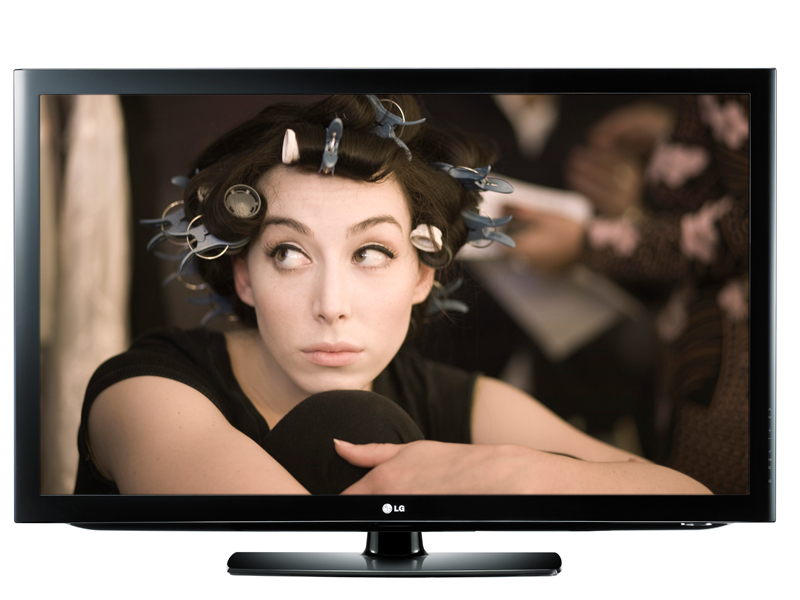Why you can trust TechRadar

The 32LD490's pictures, as is so often the case with LG TVs, make a seriously strong first impression. They are both extremely bright and richly coloured for a set of this size and price. It used to be the case that LG's focus on retina-searing hues played havoc with tones, leaving them looking overwrought and unnatural.
But the 32LD490's colour tones look pretty authentic, even when considered alongside a much more expensive, pre-calibrated set such as Panasonic's P42G20.
The aggressive approach the 32LD490 takes to pictures also initially creates the impression that the set has a decent black level response. Certainly, during normal TV fare (which tends to emphasise bright, colourful environments), what dark patches of the picture there are appear to be rich and able to provide a strong contrast counterpoint to the extremely bright, colourful stuff.
Watching hi-def on the 32LD490, meanwhile, shows that it's capable of reproducing good detail levels from crisp Blu-rays and that it doesn't suffer as badly from judder as might have been expected, given its lack of serious motion processing. There's a bit more judder than just the natural levels that you might anticipate from a Blu-ray, but only seldom does this extra stuttering appear brazenly enough to be truly distracting.
On some levels, the 32LD490 does a better job than many of its similarly priced rivals at upscaling standard definition, too. Non-HD Freeview broadcasts look really quite sharp and detailed, with precious little sign of that overt softness that often afflicts standard def on cheap LCD TVs.
It's also nice to see that the 32LD490's colours don't slide off-key in the switch from HD to standard-def, thereby sidestepping another common cheap LCD failing.
However, its standard-def performance also kicks off a few issues with the 32LD490. For while the aggressive picture stance the TV takes helps to grab your attention despite the relatively small screen size, it can also leave standard-definition pictures looking rather noisy, slightly exaggerating MPEG noise if it's there in a source (which it certainly is in most standard-def Freeview broadcasts) and generally making pictures look a touch bitty, especially if you don't rein in the contrast and backlight settings.
Sign up for breaking news, reviews, opinion, top tech deals, and more.
Once you've become accustomed to the sheer vibrancy of the 32LD490's colours, meanwhile, it may also strike you that they're not painted with any great subtlety. What should be immaculate, smooth blends instead are prone to look rather stripy or blotchy, which, in extreme cases, can leave pictures overall feeling a little flat and cartoon-like.
The generally good sharpness levels of the 32LD490 also get reduced during action-packed sequences by the appearance of some gentle motion blur. But this is seldom truly distracting, and rates as not bad at all for a £400 set.
Poor black level response and a limited viewing angle are distracting flaws, though. The former point might sound contrary after the statement earlier to the effect that dark parts of mostly bright pictures look convincing. But the reality is that whenever there's a predominantly dark scene, you can see clear evidence of grey clouding over the parts of the picture that should look black.
The seemingly respectable black level response during mostly bright scenes is something of an optical illusion, having more to do with the extremes of brightness and colour the set can produce than any really impressive black level ability.
As for the viewing angle, the screen starts to lose contrast quite drastically if you have to watch from an angle wider than 35° or so.
Current page: LG 32LD490: Picture
Prev Page LG 32LD490: Features Next Page LG 32LD490: Sound, value and ease of use
John has been writing about home entertainment technology for more than two decades - an especially impressive feat considering he still claims to only be 35 years old (yeah, right). In that time he’s reviewed hundreds if not thousands of TVs, projectors and speakers, and spent frankly far too long sitting by himself in a dark room.
